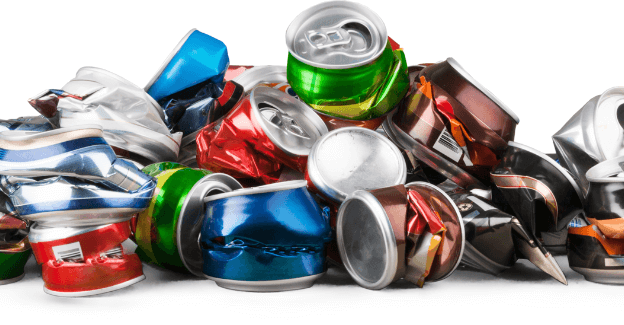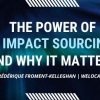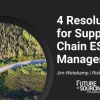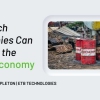What to Consider When Sourcing Sustainable Packaging
When it comes to packaging, raw material generally represents the largest cost component, especially in an inflationary commodity environment. Raw material also represents the largest carbon footprint share of the packaging itself. With the climate in peril, sourcing sustainable materials is instrumental in creating an environmentally aware product. So, it’s all the more important to ensure you’re considering key elements when determining the sustainability performance of the packaging solution.
The issue of climate change has been a hot topic for decades now, but society is at a critical point where significant change needs to happen to prevent a host of natural calamities. Much of this pressure falls on companies where consumers almost demand sustainable practices. In fact, new data from Trivium Packaging’s 2021 Buying Global Buying Green Report revealed a significant majority (67%) of consumers continue to identify as environmentally aware. Plus, 83% of younger consumers are willing to pay more for products in sustainable packaging.
We can conclude that implementing sustainable practices with regard to packaging materials is a must. Now, it’s a matter of how to do that effectively.
Have A Goal
Sustainability is a wide-reaching and big concept with many avenues. That’s why it’s important to narrow down a goal, bring it to focus and then move toward it. For Trivium, a key focus is on our CO2 footprint. We have made a commitment to the Science-Based Targets Initiative (SBTI) to reduce our carbon footprint in line with 1.5°C emissions scenarios and the criteria and recommendations of the Science Based Targets initiative .
Working with external consultancies, we understood the biggest percent of the carbon footprint was coming from our suppliers. More than 80% of the CO2 footprint of the company was derived from the raw materials we buy. While we have processes in place to ensure that impact is reduced throughout the remaining production process, this insight proved that procurement has a responsibility for climate protection in relation to the upstream supply chain carbon footprint.
Moreover, a sustainable sourcing approach needs to factor policies that may affect CO2 economics. In Europe for example, as part of the Green Deal, which aims for Europe to be the first carbon neutral continent by 2050, the EU Commission is expected to present in June 2021 a detailed program for a carbon border adjustment mechanism (CBAM) no later than 2023. Through a carbon price levied on imports of certain goods from “less climate-ambitious countries” it has the potential to impact the suppliers’ portfolio.
Engage With Your Suppliers
Once you understand the picture (in this scenario it’s suppliers), it’s all about engaging with suppliers. It is crucial to work hand-in-hand with your sustainability team during this process. They will provide direction to your suppliers, understand where they are in their sustainability journey, see their road maps and understand how their objectives fit with your sustainability objectives.
During this engagement process, your suppliers must have the same high standards as you when it comes to the following:
- Transparency on their sustainability practices
- Optimal production and procurement processes to reduce so-called Scope 1, Scope 2 and Scope 3 emissions
- Reducing other wastes and emissions (VOCs and non-GHG) as well as other valuable resources like water
Of course, as with any inquiry of change, issues can arise. Take metals for example. Many suppliers are not vertically integrated, so most of their carbon footprint is in their suppliers with Scope 3 emissions representing more than 80% in many cases. This causes a complex chain reaction in which having full transparency from cradle to gate is not always straightforward. That’s why it’s essential to press for more alignment with emissions reporting to help achieve visibility across materials suppliers’ bases.
Sustainability is taking a new dimension. Until recently, some key materials suppliers didn’t have a sustainability team, but now they do. It’s changed and continues to change. Suppliers realize some KPIs, such as tons of CO2 equivalent per ton of metal, are a vital attribute of their offer, and it can become sensitive corporate information for suppliers.
That’s why it’s important to work together, raise awareness of your expectations, and create a sense of urgency. Then go for suppliers who are the most sustainable, working toward the same goals as you.
Close The Recycling Loop
While reducing and reusing materials is vital in creating an eco-conscious product, sustainability performance is often associated with recycling. According to the 2021 Global Buying Green Report, over 50% of consumers look for information on the recyclability of packaging. So, you want to create a supply chain from raw material sourcing to consumer and back via recycling. This is where metal packaging presents a great opportunity as it recycles forever.
Plastics are difficult to recycle and are subject to downcycling, meaning their quality degrades with every recycling round. It ultimately limits the number of times they can be reintroduced into a looped system. It’s why environmental hazards like the burning of exported plastics are developing across the globe. Liquid cartons also face significant challenges in sorting and recycling.
On the other hand, metal is a permanent material, meaning it can be recycled forever without any loss in properties. This creates opportunities for efficient recycling loops with high recycling rates. In the case of aluminum, recycling requires as little as 5% of the energy needed for primary aluminum production, therefore it can have a significant impact on the CO2 footprint of the product. For this reason, we are launching several circular initiatives aiming to maximize the recycled content of our packaging material with Post-Consumer Recycled material. This is a way for us to help our customers achieve their sustainability objectives.
Be A Force For Good
Working to create change internally is vital in making an impact on the environment, but it should also be part of the mission to spread the word and lead by example. Here’s how to do this:
- Celebrate Successes: Were you able to successfully engage with suppliers and implement sustainability practices upstream? Did you switch to metal packaging that’s capable of infinite recycling? Did you set a concrete goal and outline strategies to create a more sustainable product? Great! Shout it from the rooftops and celebrate the accomplishments. This will generate notoriety in the field and hopefully inspire others to follow similar measures. See what we accomplished with our partnership with Creando Conciencia.
- Share Lessons: Developing sustainable practices is no simple task. So, the more the industry can share lessons learned while going through the process, the more streamlined it will be for other companies in the future. For us, partnering with a company that produces liquid aluminum with 60% green energy created an immediate reduction in CO2 emissions. Sharing this information accelerates the capabilities of collectively fighting climate change.
- Develop Knowledge of Sustainability Together: In addition to inspiring and sharing sustainable information, it’s vital to expand partnerships across the industry that will foster the design and the adoption of circular packaging solutions. For example, the members of Metal Packaging Europe launched the logo, Metal Recycles Forever™, which helps consumers better understand the key role they play in keeping metal in the material loop by recycling their empty packaging.
After considering these key elements, the next step is to measure sustainability and track progress on the road to decarbonizing packaging. While there is no single standard for reporting emissions, it’s important to have alignment in an agreed approach. We are all dependent on each other. So, we need to speak consistently with data.
Ultimately, procurement is all about what we buy. We need to achieve our goals with suppliers by engaging with them to be consistent and align in a way that allows us to be forces of good.









